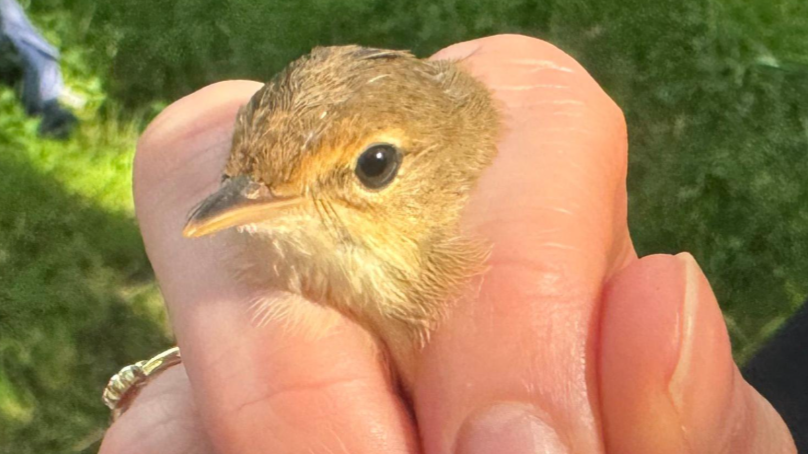Lough Neagh 'already dead', says fisherman
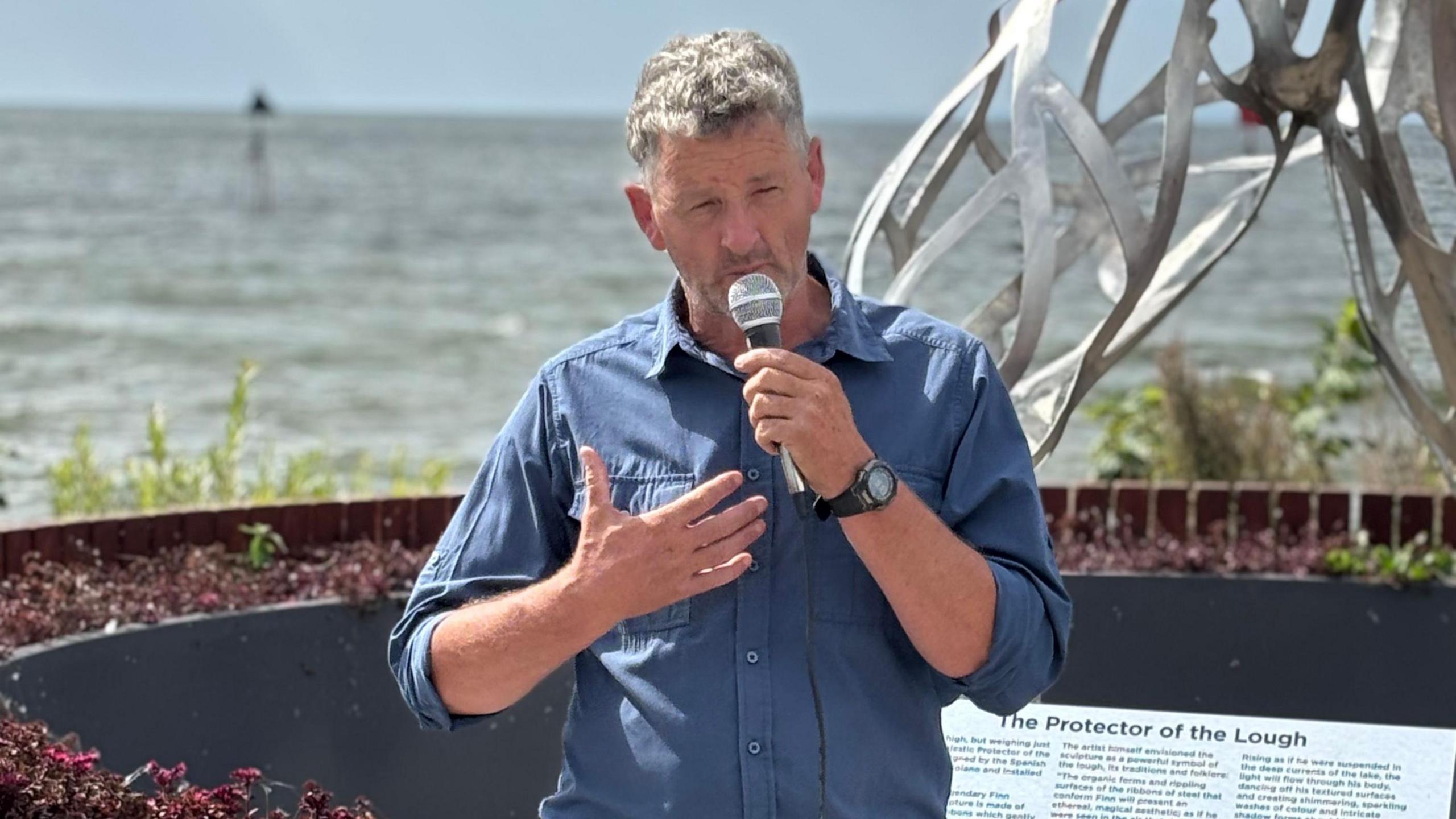
Former fisherman Declan Coney was speaking at a protest event on the shore of Lough Neagh
- Published
A man who worked as a fisherman on Lough Neagh for decades has said the UK's largest freshwater lake is "already dead".
Declan Coney made the comments at a demonstration in Antrim on Monday.
Dozens of protestors gathered to voice their concerns over a perceived lack of action regarding blue-green algae and pollution.
The algae has been detected more than 100 times across Northern Ireland this year, with the majority of sightings in Lough Neagh and the Lower Bann, as well as Lough Erne.
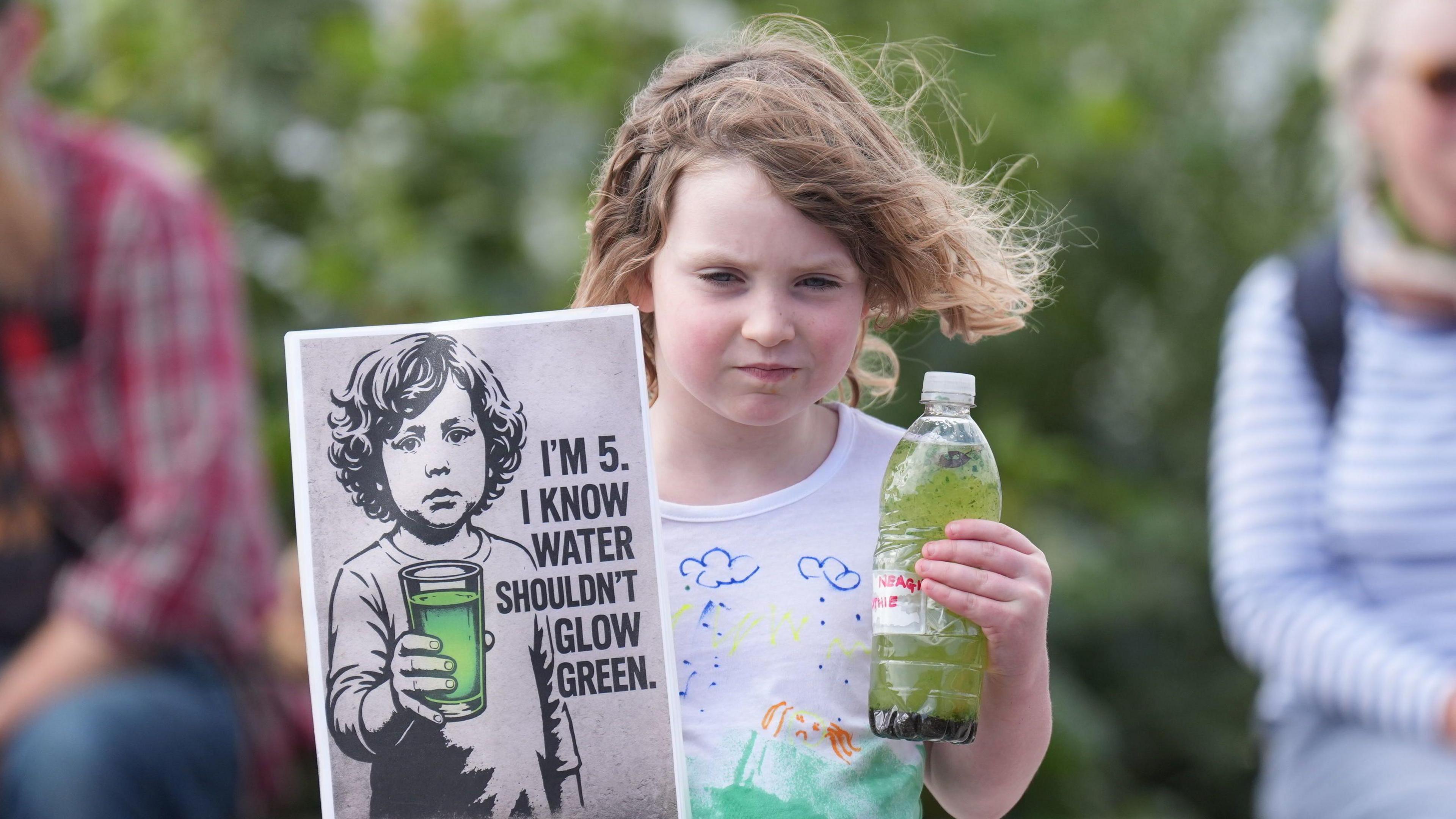
5-year-old Ailbhe brought a bottle of water taken from the Lough to the demonstration on Monday
Lough Neagh has been blighted by large blooms of the potentially toxic algae in recent years.
Mr Coney said: "To me, personally, the lough is dead. It's not dying, it is dead."
He said the impact of the algae and pollution to local wildlife has been devastating.
"I've a daughter who's 12 years of age who's obsessed with the lough.
"Every chance we get we're out on a boat, we're out birdwatching, butterfly recording, and that has all come to a standstill."
"Realistically, nobody seems to care," he added.

Patsy O'Malley-Boyd is a Lough Neagh campaigner
The group Save Lough Neagh organised the protest on the banks of the lough.
Campaigner Patsy O'Malley Boyd said it is with a feeling of sadness that the group has had to turn out again and that there has been "no change" in the state of the Lough.
She told BBC News NI that she feels like no one is listening.
Environment 'at bottom of the list'
Mary O'Hagan, one of the Save the Lough's founding members, says many people are deeply frustrated and angry about the condition of lough.
"There's a lack of funding in the Executive for everything - for health, for education, for roads, for everything.
"But it always seems like the environment is just at the bottom of that list," she said.
"This is the third year it's got progressively worse. It's the worst this year we've ever seen it.
She said she doesn't think people realise the negative affect this has on public health.
Save Lough Neagh are calling for a series of measures which they believe will help to reverse the problems, including the establishing of a independent protection agency, and an end to commercial dredging.
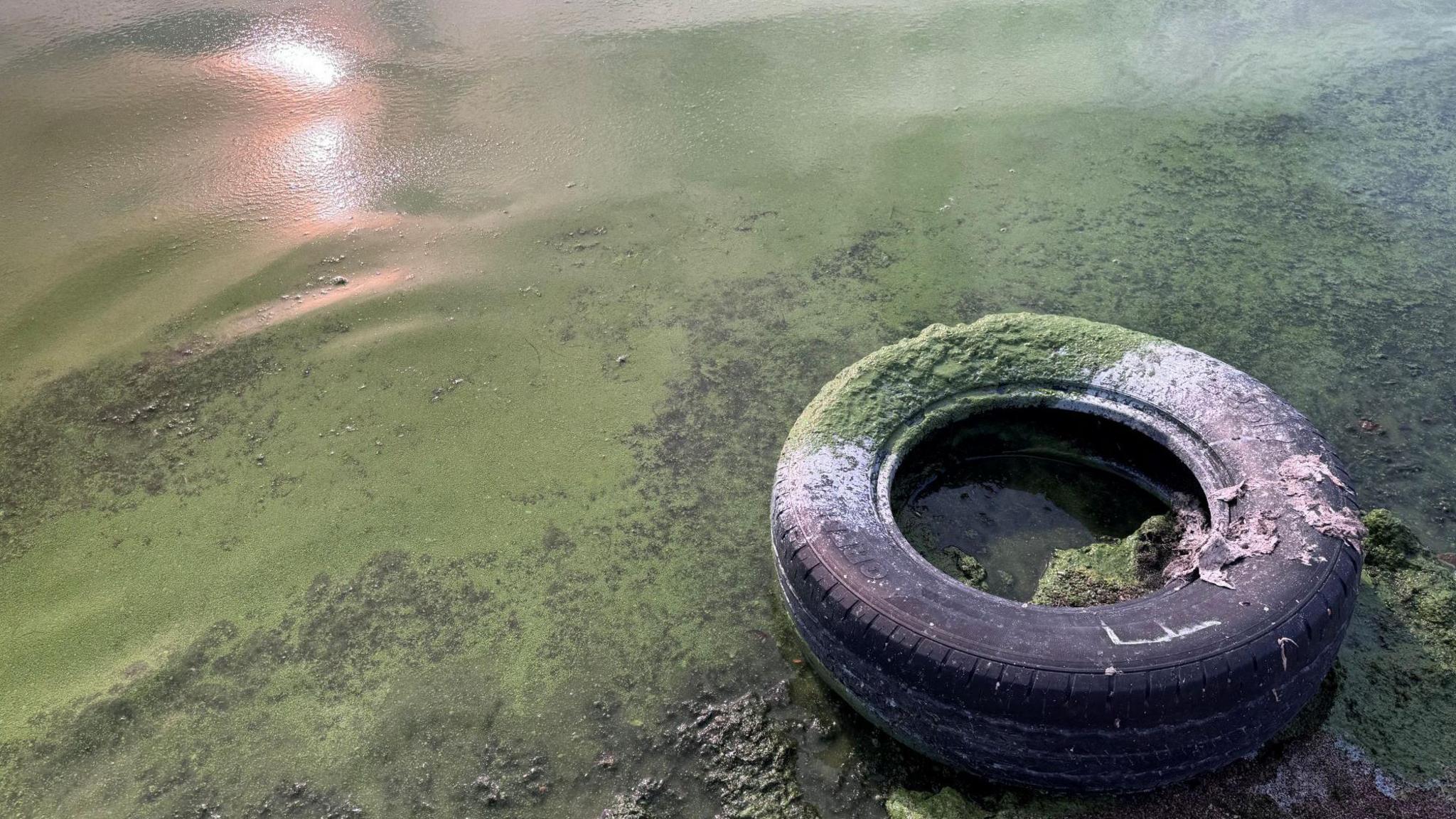
Campaigners have long raised concerns about the future of the lough
A spokesperson for Department of Agriculture, Environment and Rural Affairs (daera) said: "The minister (Andrew Muir) has been very clear in interviews in recent days about the actions that need to be taken to address the blue green algae problems in Lough Neagh and other waterways.
"The minister has also been clear that political support will be required in the coming months for those actions to proceed."
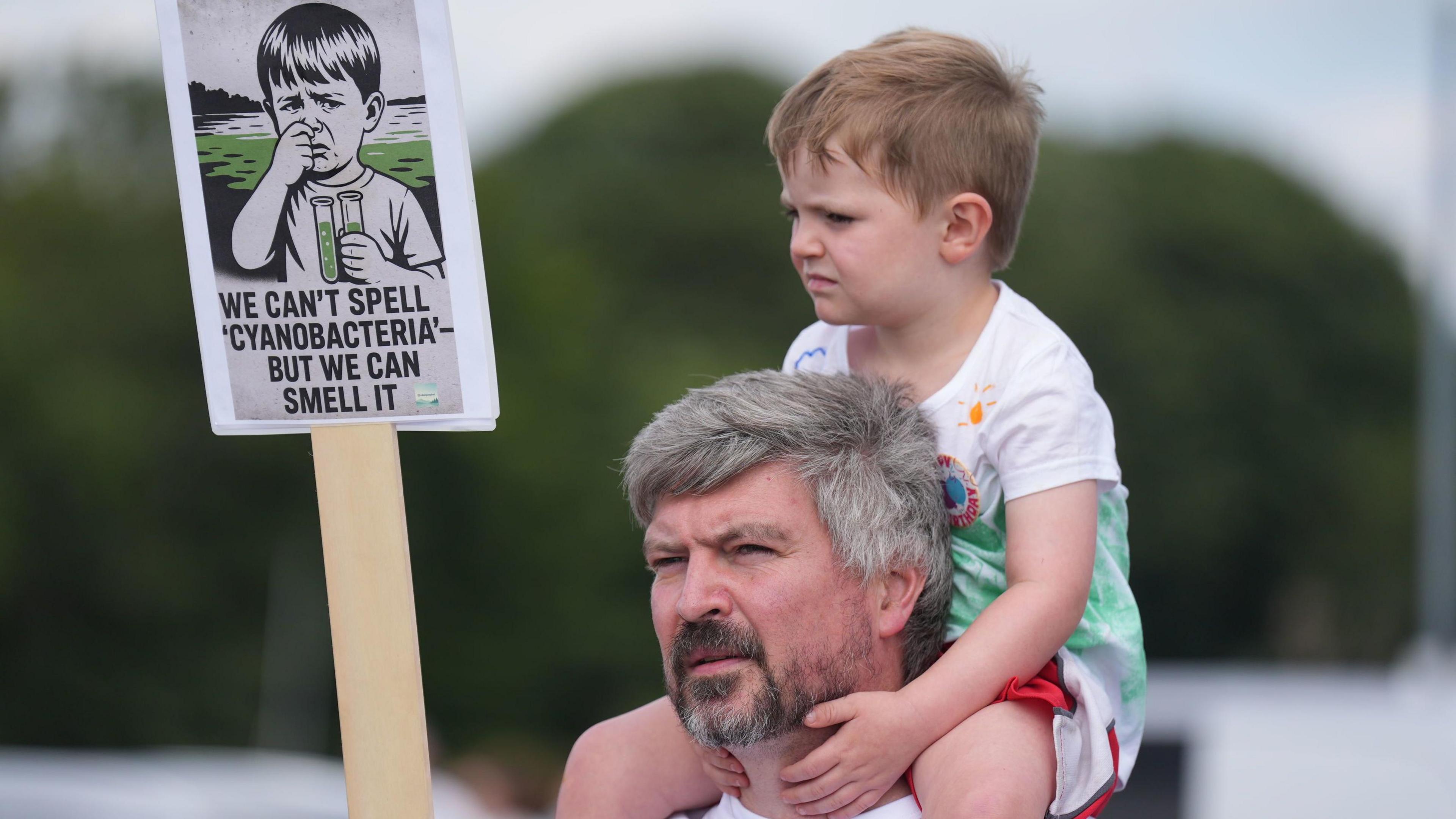
A Lough Neagh Action Plan was approved by the executive last year.
Daera said 14 out of 37 actions have been completed, while another 22 are being progressed.
The science shows the pollution problem in Lough Neagh comes largely from agriculture, with some from wastewater processing, septic tank seepage and industrial pollution around the shores.
- Published20 August

- Published12 August
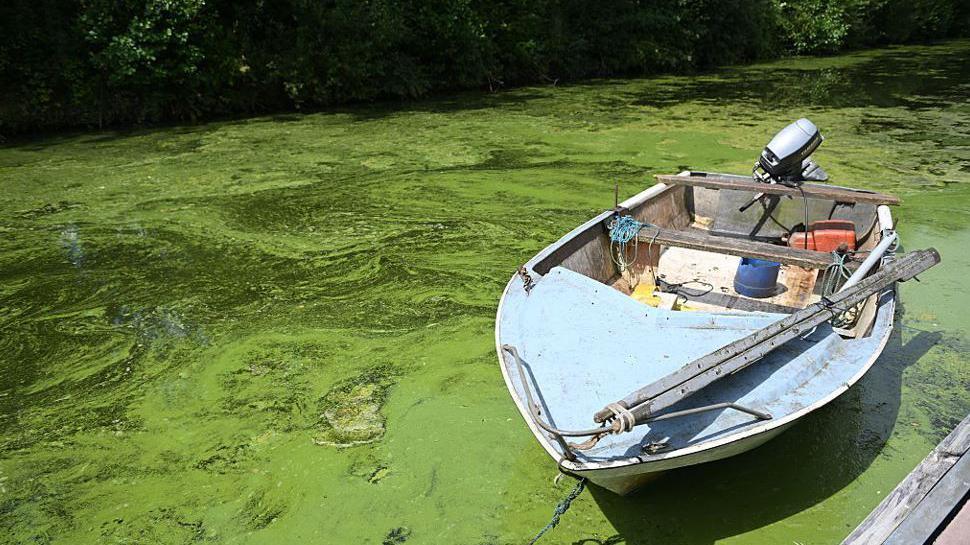
- Published6 January
